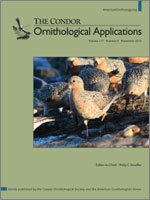An understanding of the ecological factors determining bird species' distributions is essential for making informed conservation decisions. These data are especially important for range-restricted species, such as the Santa Marta Bush-Tyrant (Myiotheretes pernix), a threatened endemic of the Sierra Nevada de Santa Marta (SNSM) in Colombia. Here we adopt a novel hierarchical analysis to describe the bush-tyrant's ecological niche and infer the regional and local determinants of its limited distribution. We first describe habitat selection based on local habitat use and microhabitats used for foraging. We then use a geoprocessing modeling algorithm to combine habitat selection data with a climatic niche model. The resulting model produced an index of habitat suitability, which we converted into a predicted geographic distribution. Santa Marta Bush-Tyrants showed no clear habitat preferences, but favored forested and secondary growth habitats over open areas, at elevations between 2,100 and 3,300 m. The species' predicted distribution was restricted to the northern flanks of the SNSM, with an estimated extent of ~352 km2. This estimate is more restricted than previous estimates (570 km2), but does not alter the species' status as Endangered based on IUCN criteria. The model predicted that the presence of Santa Marta Bush-Tyrants was regionally dependent on cold and humid climates, with low annual variation in temperature and precipitation. Locally, the species' presence was determined by the availability of habitat edges between forests and open areas. Conservation actions should aim to reduce rates of forest loss, while maintaining the presence of areas with good light and exposed perches, microhabitat conditions typically found in habitat edges or areas of natural disturbance. An explicit integration of quantitative data on habitat use and foraging patterns into niche models would help to obtain more realistic and detailed projections of the occupied distribution of range-restricted birds.
How to translate text using browser tools
21 October 2015
Understanding the distribution of a threatened bird at multiple levels: A hierarchical analysis of the ecological niche of the Santa Marta Bush-Tyrant (Myiotheretes pernix)
Esteban Botero-Delgadillo,
Nicholas J. Bayly,
Sandra Escudero-Páez,
María Isabel Moreno

The Condor
Vol. 117 • No. 4
November 2015
Vol. 117 • No. 4
November 2015
Colombia
distribution
foraging ecology
habitat use
microhabitat
Sierra Nevada de Santa Marta




